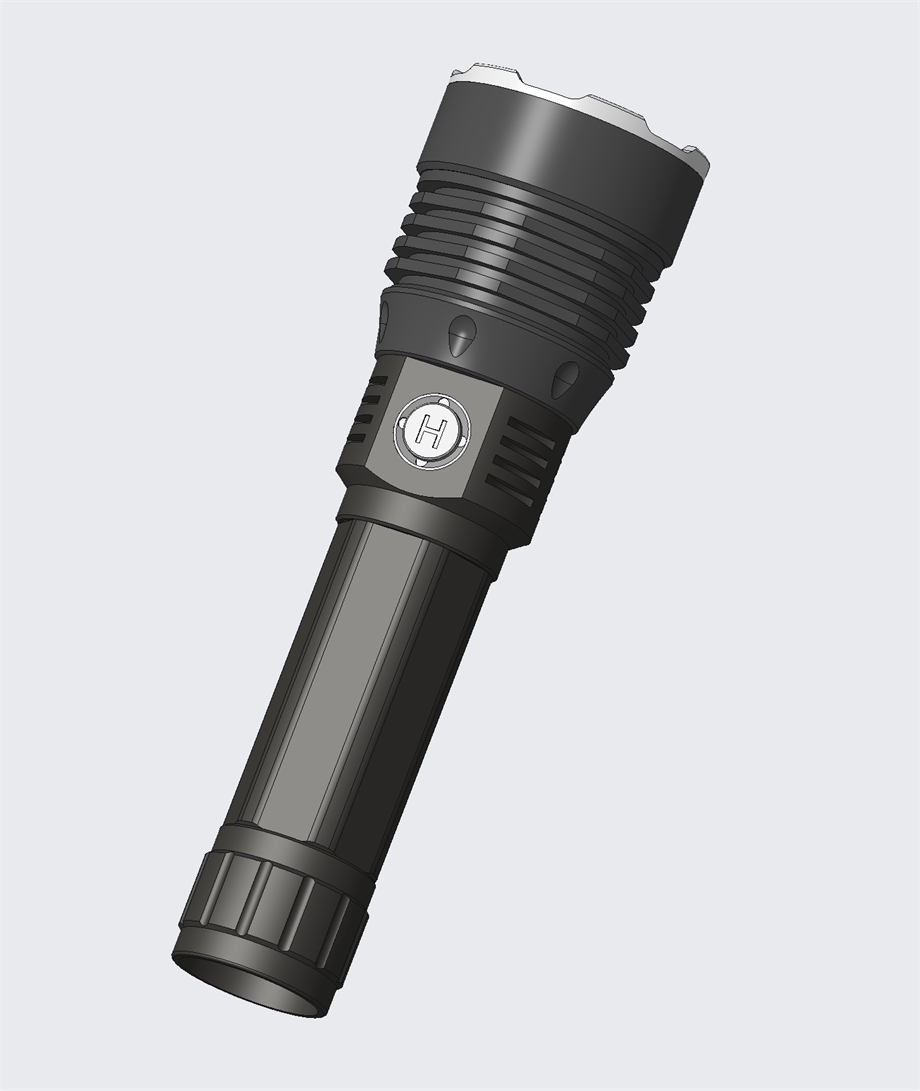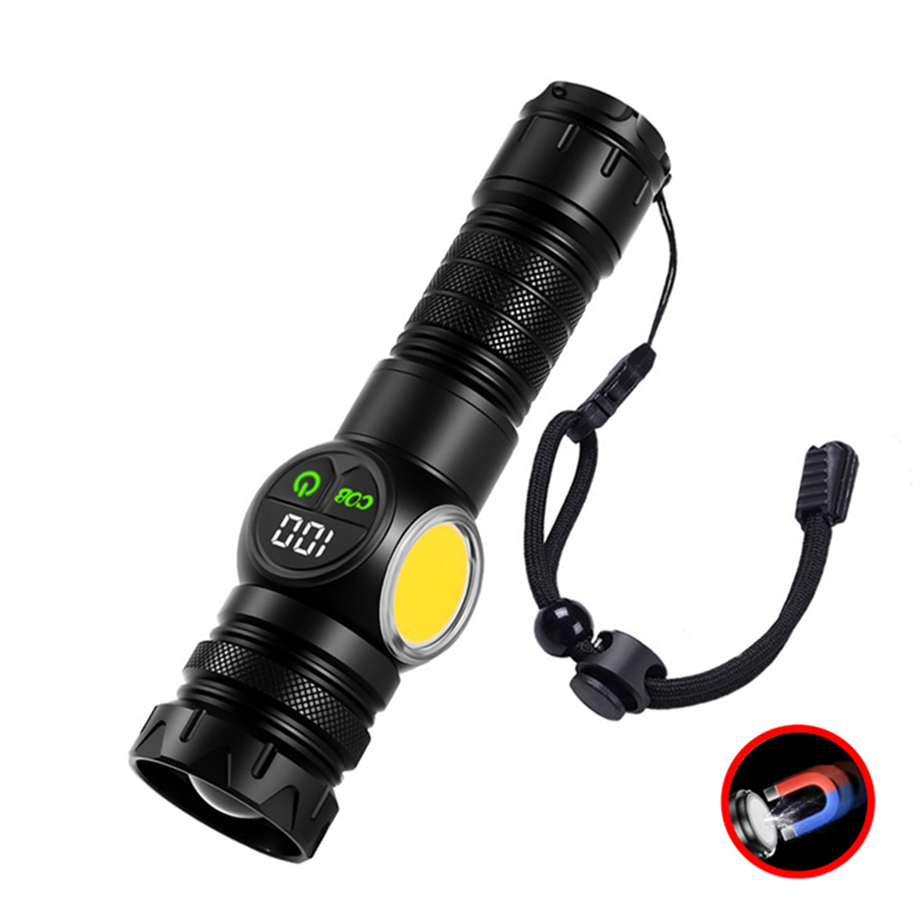Why Long-Term Supplier Relationships Are Key to Cost Savings in Flashlight Orders

Building long-term supplier relationships is essential for reducing costs in flashlight orders. These partnerships allow you to negotiate better pricing, streamline procurement, and minimize administrative expenses. Suppliers who understand your business can offer tailored solutions that improve efficiency and reduce waste. Over time, these collaborations foster trust and mutual growth, creating a competitive advantage in the market. Understanding why long-term supplier relationships are key to cost savings in flashlight orders can help you unlock significant financial and operational benefits.
Key Takeaways
Working with the same suppliers for a long time saves money. It helps get better prices and lowers extra costs.
Talking and working well with suppliers builds trust. This also ensures materials arrive on time, avoiding delays.
Setting goals to check supplier performance ensures good quality and efficiency.
Long-term deals can give bulk discounts and special solutions. This cuts costs and makes buying easier.
Teaming up with suppliers can bring new ideas. This helps create unique flashlights and stay ahead in the market.
Understanding Why Long-Term Supplier Relationships Are Key to Cost Savings in Flashlight Orders
Defining Long-Term Supplier Relationships
Long-term supplier relationships involve sustained partnerships between your business and suppliers over an extended period. These relationships go beyond transactional exchanges. They focus on collaboration, trust, and mutual growth. By fostering these connections, you can transform suppliers into strategic partners who understand your business needs and align with your goals. This approach ensures consistent support for your operations, especially in industries like flashlight manufacturing, where reliability and efficiency are critical.
Relevance of Supplier Relationships to Flashlight Orders
In flashlight orders, supplier relationships play a pivotal role in ensuring cost efficiency and operational success. Flashlight production often requires specific materials and components, such as LED bulbs, batteries, and durable casings. A strong relationship with suppliers ensures timely delivery of these materials at competitive prices. Additionally, suppliers familiar with your production requirements can offer tailored solutions, such as bulk pricing or customized components, which directly contribute to cost savings. These partnerships also reduce the risks of supply chain disruptions, ensuring your production remains uninterrupted.
Characteristics of Effective Supplier Relationship Management
Effective supplier relationship management is essential for achieving cost savings and operational efficiency. To manage these relationships successfully, you should focus on the following key characteristics:
Effective communication enhances mutual understanding and collaboration.
Fostering collaboration and trust transforms suppliers into strategic partners.
Setting clear expectations and performance metrics eliminates ambiguity.
Regular performance evaluations ensure continuous adherence to standards.
Utilizing tools like supplier relationship management (SRM) software can further streamline these processes. SRM software facilitates collaboration, tracks supplier performance, and helps mitigate risks. Additionally, implementing a vendor management system (VMS) can consolidate suppliers, simplify procurement, and improve cost efficiency. These tools transform procurement into a strategic function, enabling you to focus on building long-term partnerships that drive savings and innovation.
Cost Savings Through Long-Term Supplier Relationships

Lower Administrative and Transaction Costs
Long-term supplier relationships significantly reduce administrative and transaction costs. When you work with the same suppliers over time, you eliminate the need for repetitive onboarding, contract negotiations, and vendor evaluations. This consistency streamlines your procurement processes and allows you to focus on core operations. For example, companies like Toyota and its Tier 1 suppliers collaborate to optimize processes and reduce waste. Similarly, Apple’s partnership with Foxconn ensures efficient production and timely delivery, minimizing unnecessary administrative overhead.
By leveraging supplier relationship management tools, you can further enhance efficiency. These systems automate routine tasks, such as purchase order generation and invoice processing, saving time and resources. E-procurement platforms also reduce manual errors, ensuring smoother transactions and fewer disruptions in your supply chain.
Volume Discounts and Bulk Pricing Benefits
Establishing long-term partnerships with suppliers unlocks access to volume discounts and bulk pricing. Suppliers are more likely to offer favorable terms when they see a commitment to sustained collaboration. This approach benefits flashlight orders, where purchasing components like LED bulbs or batteries in bulk can lead to substantial cost savings.
Walmart exemplifies this strategy by leveraging its global supplier network to negotiate lower prices. By committing to large-scale orders, you can achieve similar savings while ensuring a steady supply of materials. Additionally, suppliers often provide exclusive deals or rebates to loyal partners, further reducing costs over time.
Streamlined Procurement and Inventory Management
Supplier relationships play a crucial role in streamlining procurement and inventory management. By collaborating closely with suppliers, you gain better visibility into inventory levels and demand forecasts. This transparency helps you avoid stockouts and overstocking, improving inventory turnover and reducing carrying costs.
Supplier relationship management systems enhance this process by automating procurement activities and tracking supplier performance. Features like supplier onboarding, contract management, and collaborative demand planning optimize your supply chain management. For flashlight orders, these tools ensure timely delivery of components, enabling uninterrupted production. Companies like Procter & Gamble and Boeing demonstrate how strong supplier partnerships improve supply chain efficiency and reduce costs.
Beyond Cost Savings: Additional Benefits of Supplier Relationship Management
Consistent Quality and Reliability
Long-term supplier relationships ensure consistent quality and reliability in your flashlight orders. Suppliers who understand your business requirements can maintain high standards for materials and components, such as LED bulbs or battery casings. This consistency reduces the likelihood of defective products, saving you from costly returns or repairs. Reliable suppliers also deliver materials on time, ensuring your operations run smoothly without delays. By fostering trust and collaboration, you can create a dependable supply chain that supports your production goals.
Reduced Supply Chain Risks
Strong supplier relationships help you mitigate risks in your supply chain. Proactive communication with suppliers allows you to address potential disruptions before they escalate. For example, if a supplier anticipates delays due to raw material shortages, they can inform you in advance, enabling you to adjust your production schedule. Reliable suppliers also ensure consistent delivery of materials, reducing the risk of production halts. The table below highlights how supplier relationship management improves risk management and operational efficiency:
Benefit | Explanation |
|---|---|
Improved risk management | Proactive communication with suppliers helps mitigate potential supply chain disruptions. |
Reliability and Consistency | Reliable suppliers ensure consistent delivery of materials and services, reducing production delays. |
Risk Mitigation | Good relationships with suppliers can help mitigate risks such as supply chain disruptions. |
By prioritizing supplier relationship management, you can build a resilient supply chain that adapts to unexpected challenges.
Opportunities for Innovation and Customization
Long-term supplier partnerships open doors to innovation and customization in flashlight manufacturing. Suppliers often provide branding, design, and functional modifications tailored to your specific needs. For instance, they can help you develop unique flashlight models, such as tactical or UV flashlights, to meet niche market demands. These collaborations also give you access to the latest technologies and trends, fostering innovation in product design. Some examples include voice-activated flashlights with biometric authentication or wearable lighting solutions for outdoor enthusiasts. By leveraging these opportunities, you can differentiate your products and stay ahead of competitors.
Strategies for Building and Maintaining Long-Term Supplier Relationships

Establishing Open Communication Channels
Open communication channels form the foundation of a strong supplier relationship. Clear communication ensures that both parties understand expectations and avoid misunderstandings. Regularly updating suppliers about project requirements, changes in specifications, and timelines fosters trust and alignment. Leveraging technology solutions, such as supplier relationship management tools, can streamline interactions and improve efficiency. Collaborative planning with suppliers also strengthens the partnership by encouraging innovative solutions tailored to your needs.
To enhance communication, consider these best practices:
Maintain transparency by sharing relevant information about processes and decisions.
Use diverse communication methods, such as emails, video calls, and in-person meetings, to accommodate preferences.
Recognize and reward suppliers who consistently perform well to reinforce accountability and motivation.
By prioritizing open communication, you create a proactive environment that supports a mutually beneficial relationship.
Aligning Business Goals and Expectations
Aligning your goals with those of your suppliers ensures a seamless partnership. Start by assessing your objectives and identifying how they align with the supplier’s capabilities. Document agreed-upon goals in a service-level agreement (SLA) to eliminate ambiguity. Regularly monitor performance and provide feedback to ensure alignment remains intact.
Viewing suppliers as strategic partners enhances collaboration. Involve them in discussions about challenges and opportunities to foster innovation. Addressing issues together builds resilience and strengthens the relationship. For example, brainstorming solutions to supply chain disruptions can lead to cost-saving strategies that benefit both parties.
Implementing Performance Metrics and Feedback Systems
Performance metrics are essential for evaluating supplier relationships. Metrics such as on-time delivery, quality, and cost adherence provide measurable insights into supplier performance. For flashlight orders, tracking these metrics ensures that suppliers meet your production needs without compromising quality or efficiency.
Feedback systems further enhance supplier relationship management. Collect feedback consistently from various departments to gain a comprehensive view of supplier performance. Use this input to address areas for improvement and recognize excellence. A well-designed feedback loop strengthens the partnership and drives continuous improvement.
Building Trust and Long-Term Commitment
Building trust and fostering a long-term relationship with suppliers requires deliberate effort and strategic actions. Trust forms the foundation of any successful partnership, especially in industries like flashlight manufacturing, where reliability and consistency are critical. You can achieve this by prioritizing regular and transparent communication. Sharing updates, discussing challenges openly, and respecting each other’s viewpoints create an environment of mutual respect. Upholding ethical standards in all interactions further strengthens this trust.
Viewing suppliers as partners rather than mere vendors enhances collaboration. When you treat suppliers as integral to your success, they feel valued and become more invested in the relationship. This approach encourages them to go beyond fulfilling orders and actively contribute to your business goals. For example, they may suggest cost-saving measures or innovative solutions tailored to your flashlight production needs.
Collaborating to solve challenges also reinforces the partnership. When issues arise, working together to find solutions demonstrates a shared commitment to success. For instance, if a supplier faces delays due to unforeseen circumstances, brainstorming alternative strategies ensures minimal disruption to your operations. This proactive approach builds confidence and solidifies the long-term relationship.
Consistency in your actions is equally important. Delivering on promises, honoring agreements, and maintaining professionalism at all times show your dedication to the partnership. Over time, these practices not only build trust but also improve profitability by reducing risks and fostering operational efficiency. Supplier relationship management tools can support these efforts by tracking performance and ensuring alignment with shared objectives.
By focusing on trust and commitment, you create a resilient partnership that benefits both parties. This strategy ensures a steady supply chain, consistent quality, and opportunities for growth, securing your competitive edge in the flashlight industry.
Long-term supplier relationships are vital for reducing costs and improving operational efficiency in flashlight orders. These partnerships go beyond financial benefits, offering consistent quality, innovation, and reduced risks. Companies like Toyota and Apple demonstrate how strategic supplier collaboration optimizes processes and enhances production.
Company | SRM Practices | Operational Efficiency Achieved |
|---|---|---|
Toyota | Collaborates with Tier 1 suppliers, focuses on trust and continuous improvement. | Optimized processes, reduced waste, and innovation in the supply chain. |
Apple and Foxconn | Strategic partnership with close coordination and regular communication. | High-quality products and efficient production processes. |
By prioritizing supplier relationship management, you can secure a competitive edge and build a resilient supply chain that supports long-term growth.
FAQ
What are the key benefits of long-term supplier relationships for flashlight orders?
Long-term supplier relationships reduce costs, improve efficiency, and ensure consistent quality. They also provide access to bulk discounts, minimize supply chain risks, and foster innovation. These partnerships help you streamline procurement and maintain a steady supply of materials.
How do supplier relationships help reduce costs in flashlight manufacturing?
Strong supplier relationships lower administrative expenses and unlock volume discounts. Suppliers familiar with your needs can offer tailored pricing and solutions. This reduces waste and ensures efficient production, saving you money over time.
Can long-term supplier relationships improve product quality?
Yes, reliable suppliers understand your quality standards and consistently deliver high-grade materials. This reduces defects and ensures your flashlights meet customer expectations. A dependable supplier also helps you avoid costly returns or repairs.
How do I measure the success of a supplier relationship?
Use performance metrics like on-time delivery, quality consistency, and cost adherence. Regular feedback and evaluations ensure alignment with your goals. Supplier relationship management tools can track these metrics and highlight areas for improvement.
What tools can I use to manage supplier relationships effectively?
Supplier relationship management (SRM) software and vendor management systems (VMS) streamline procurement, track performance, and enhance collaboration. These tools automate tasks like contract management and demand planning, helping you build stronger partnerships.
See Also
Boosting Revenue Through Wholesale Flashlight Sourcing Strategies
Advantages of Buying Flashlights in Bulk from Wholesalers
Important Factors to Assess When Choosing Flashlight Suppliers
Top Wholesale Sources for Purchasing Flashlights in Volume
Building Strategic Alliances with Flashlight Wholesale Distributors
